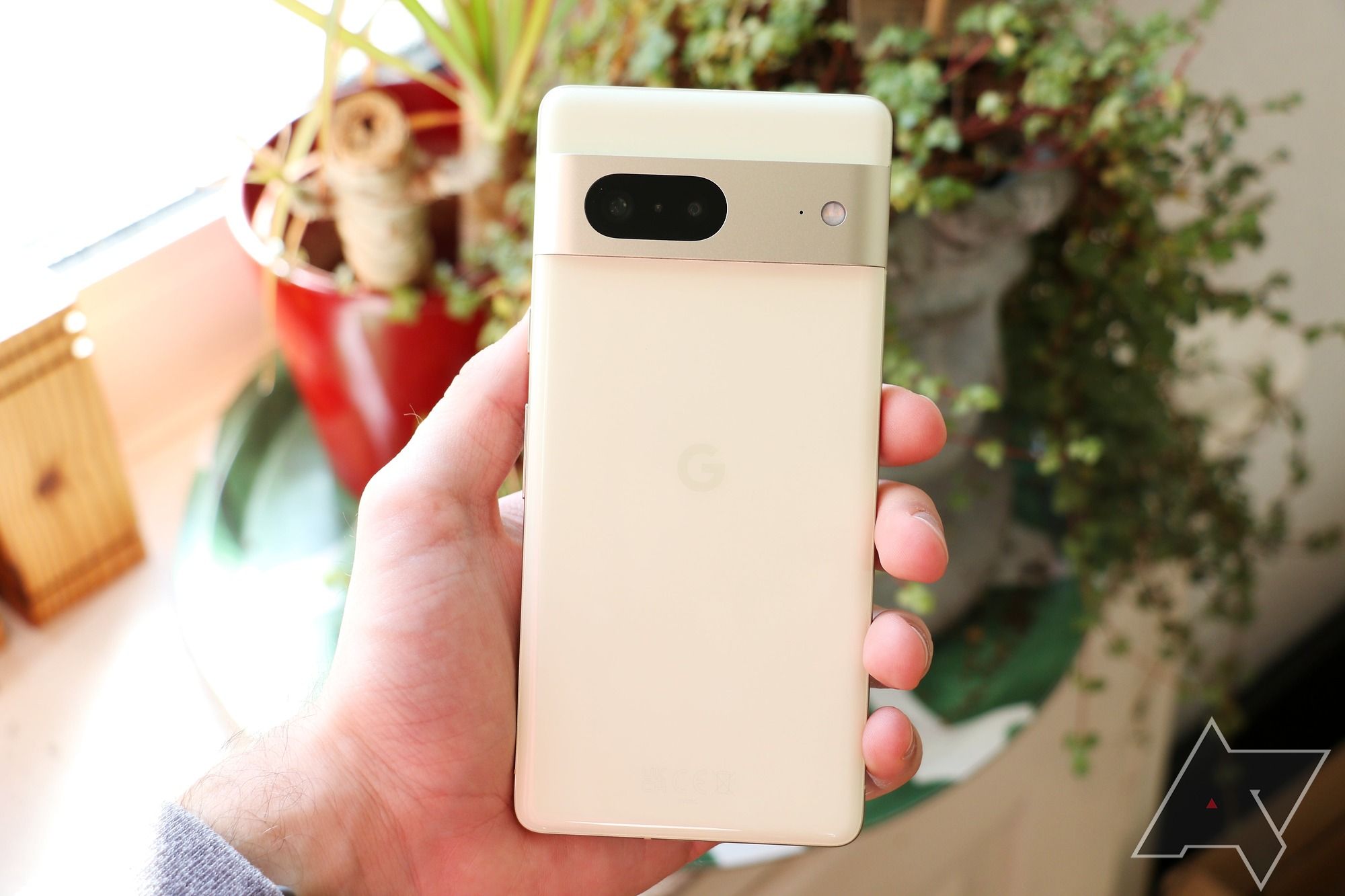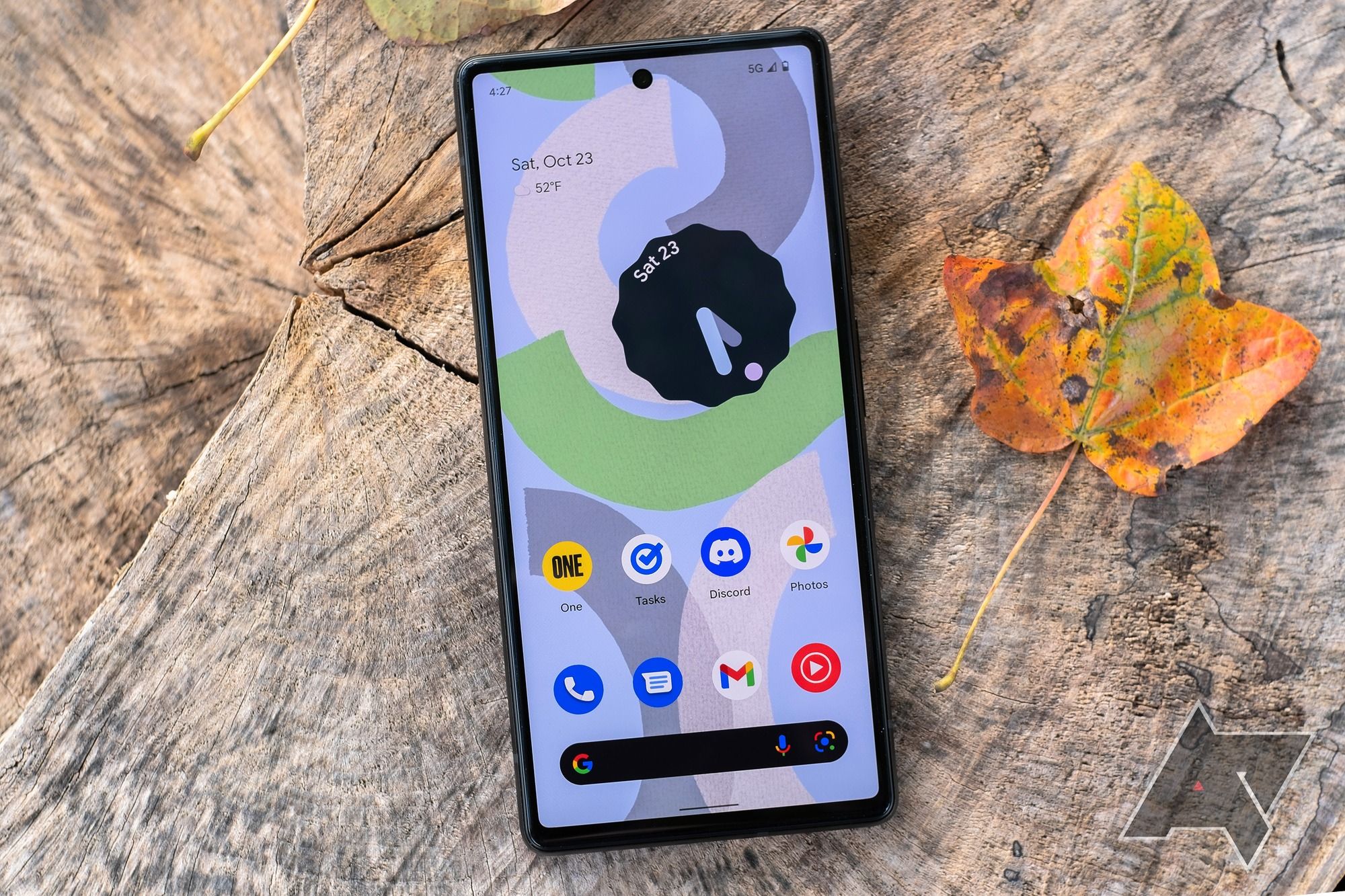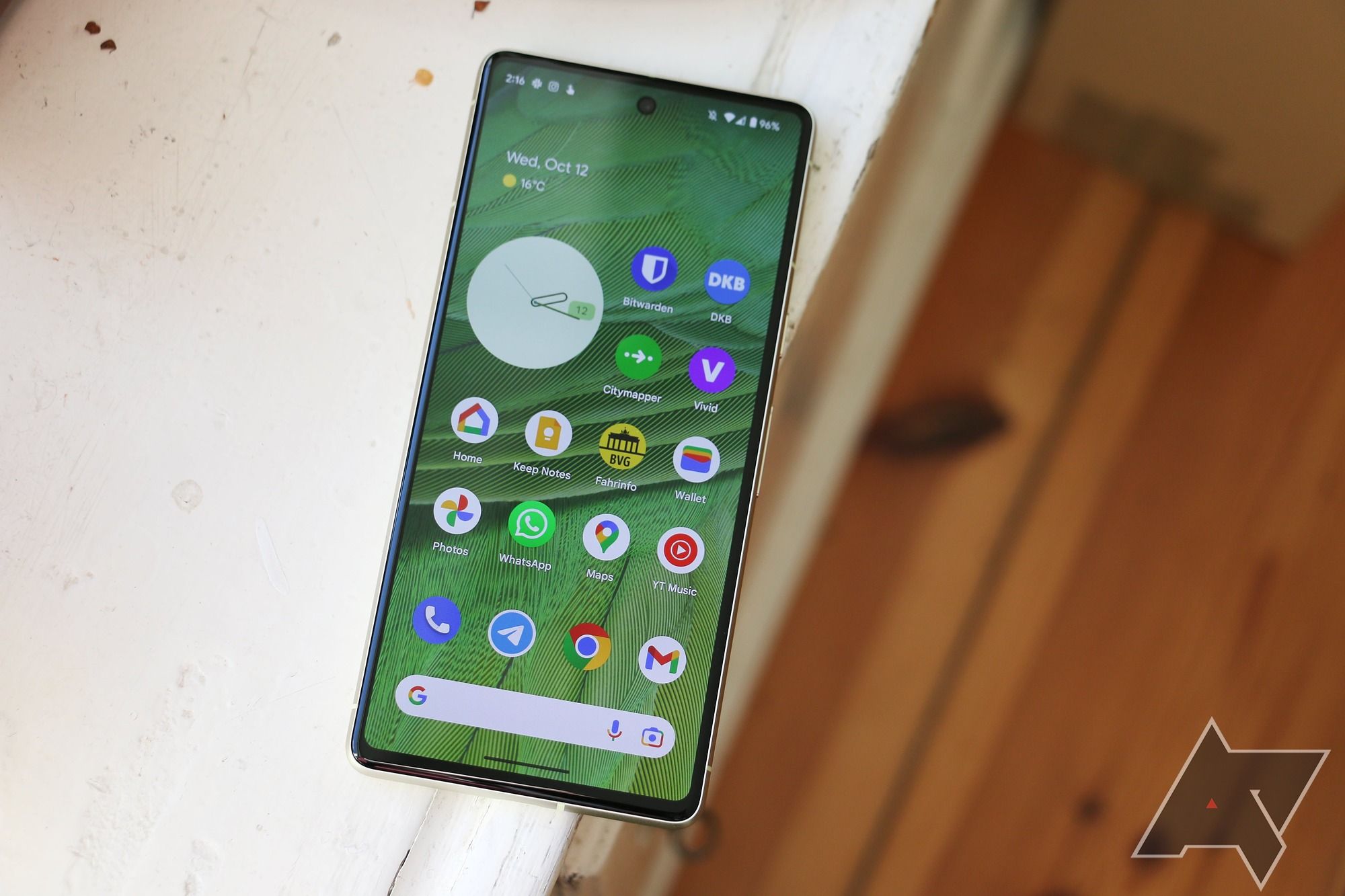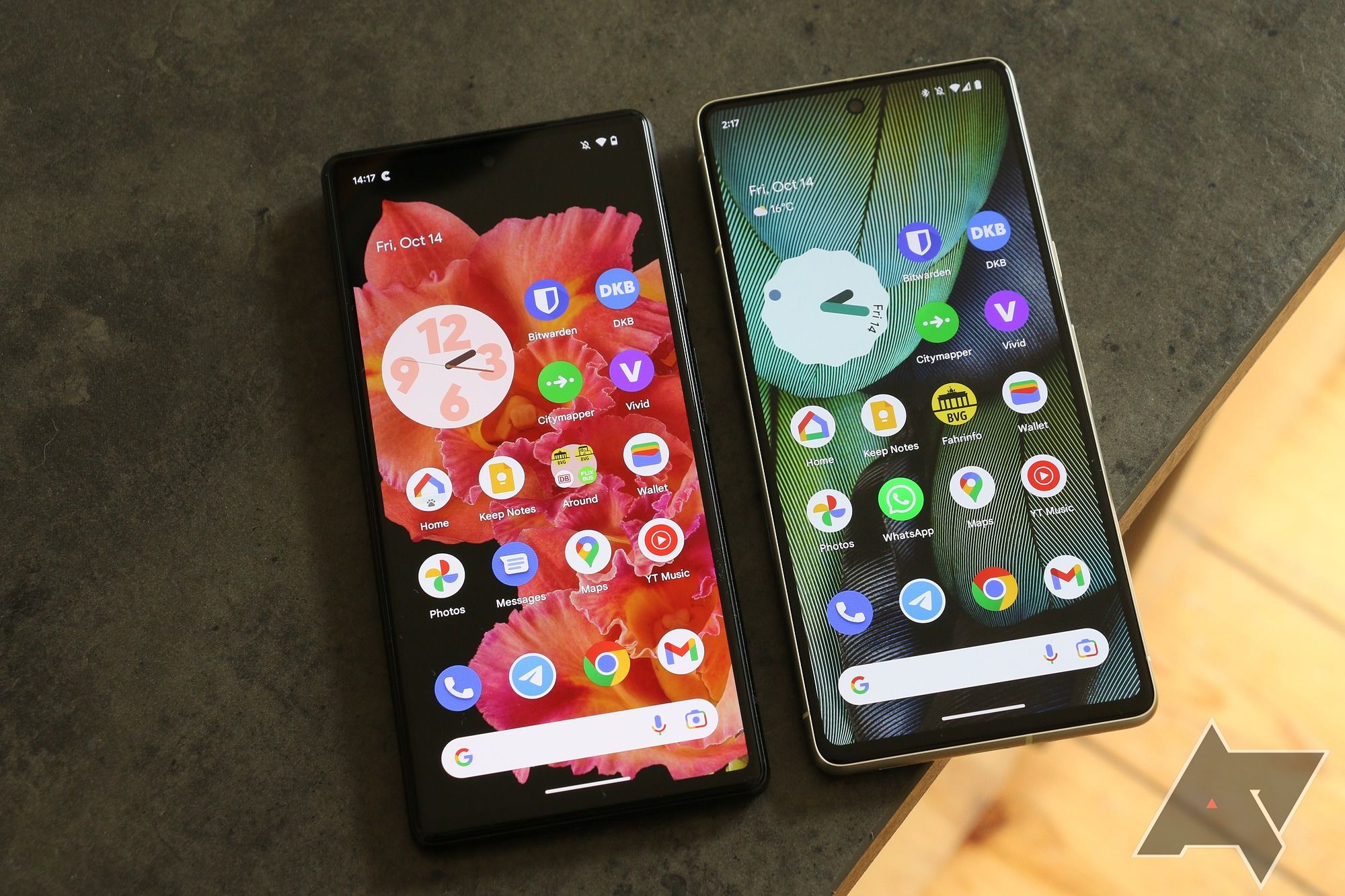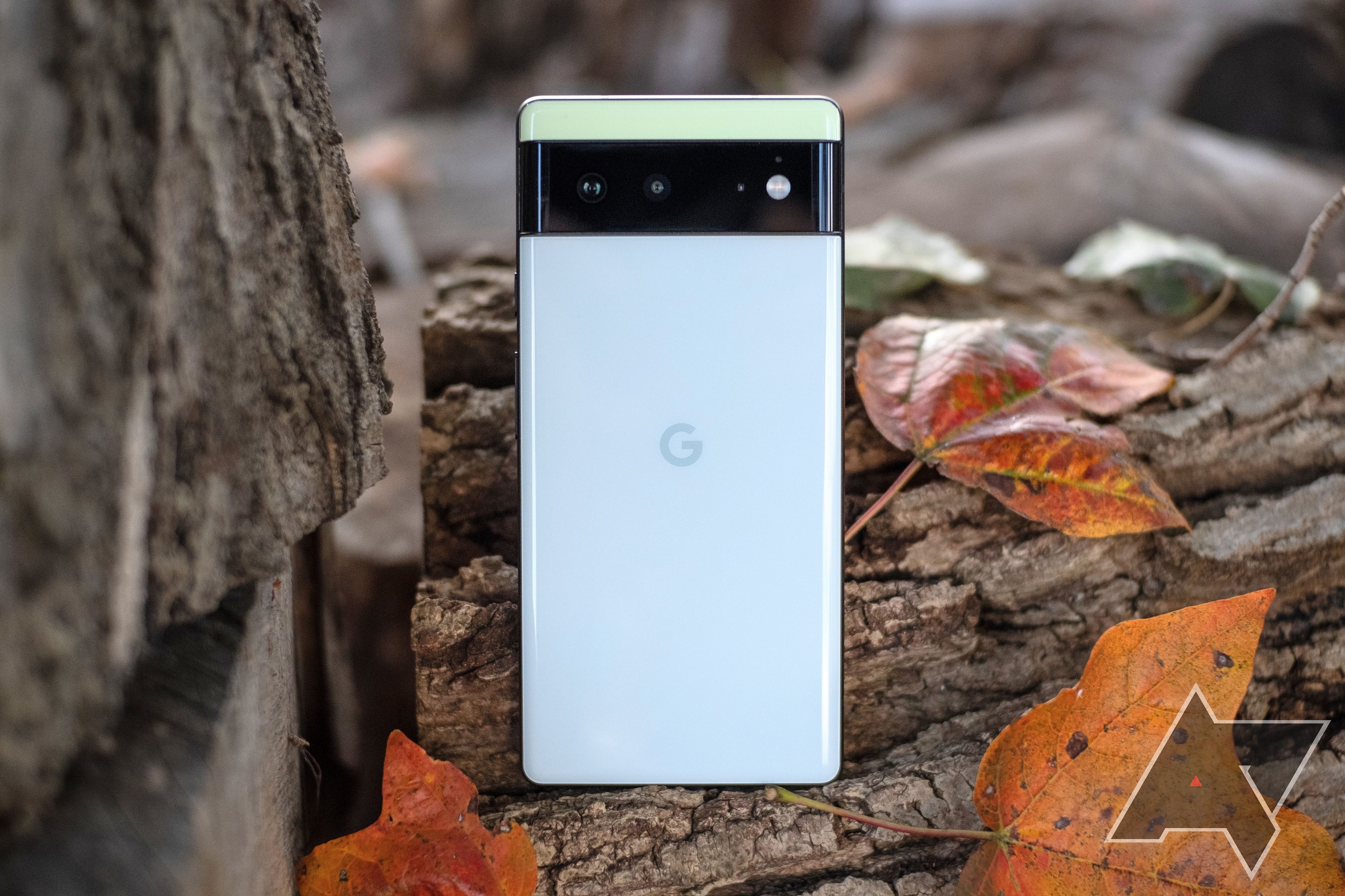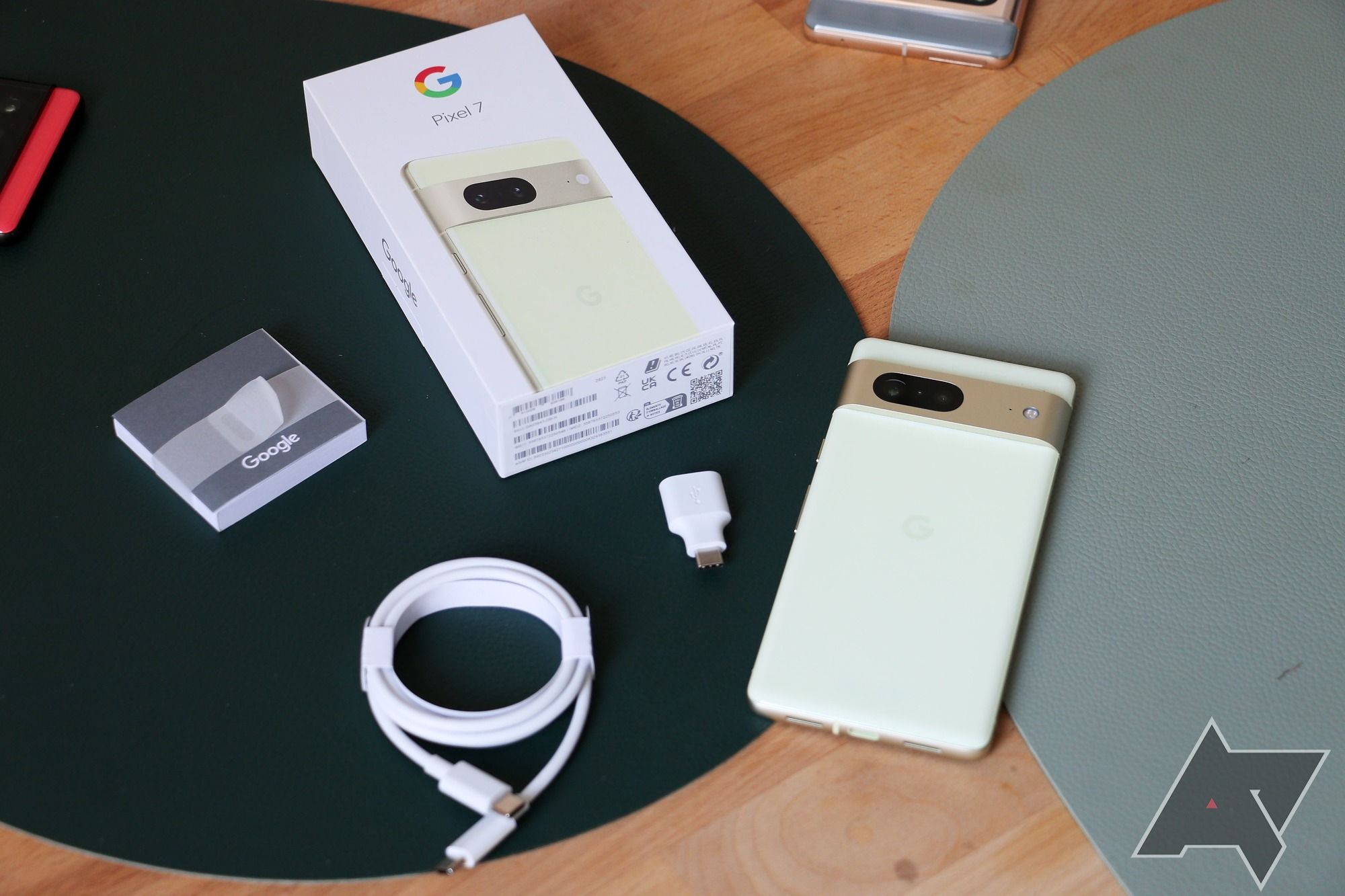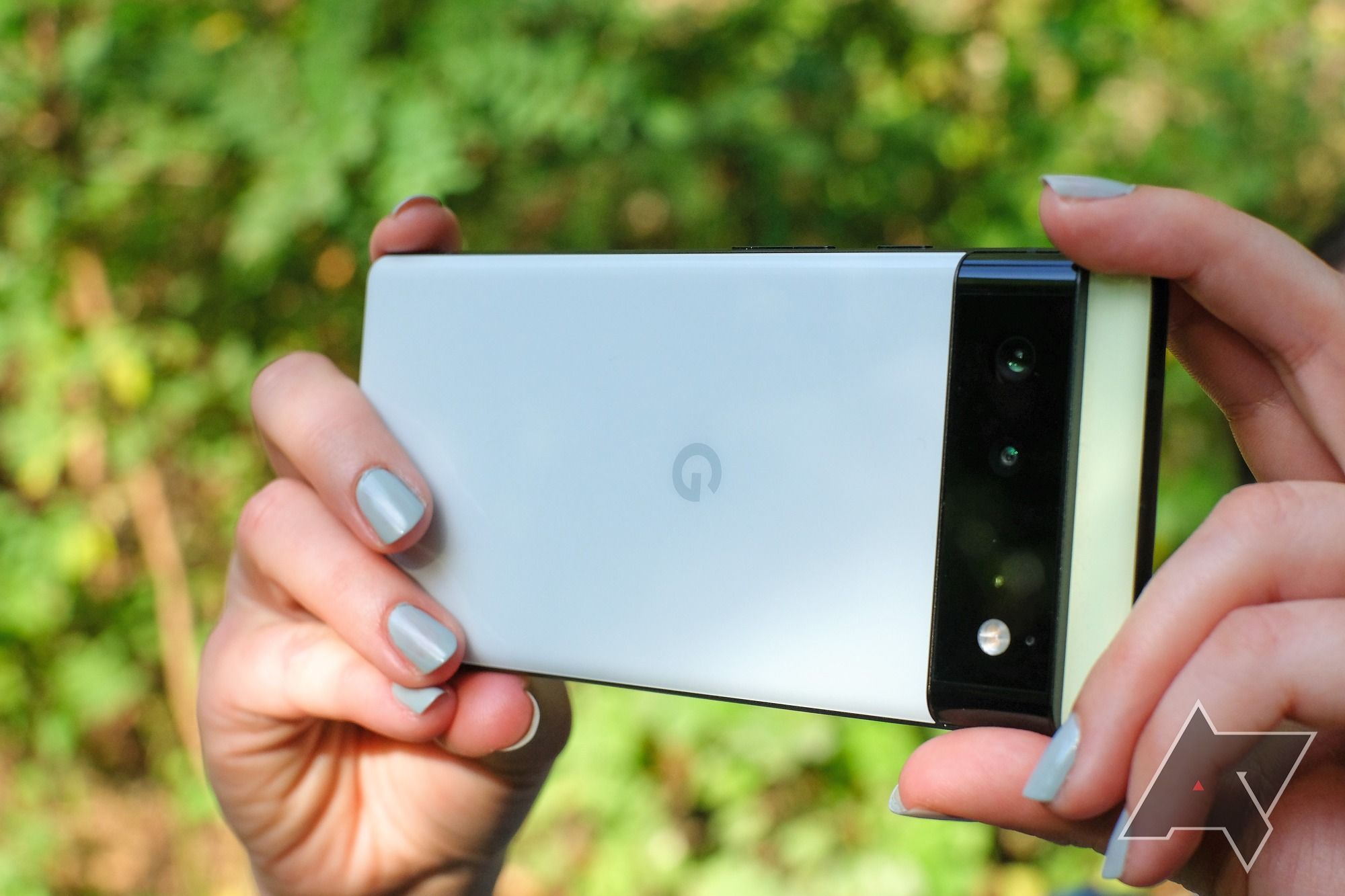-
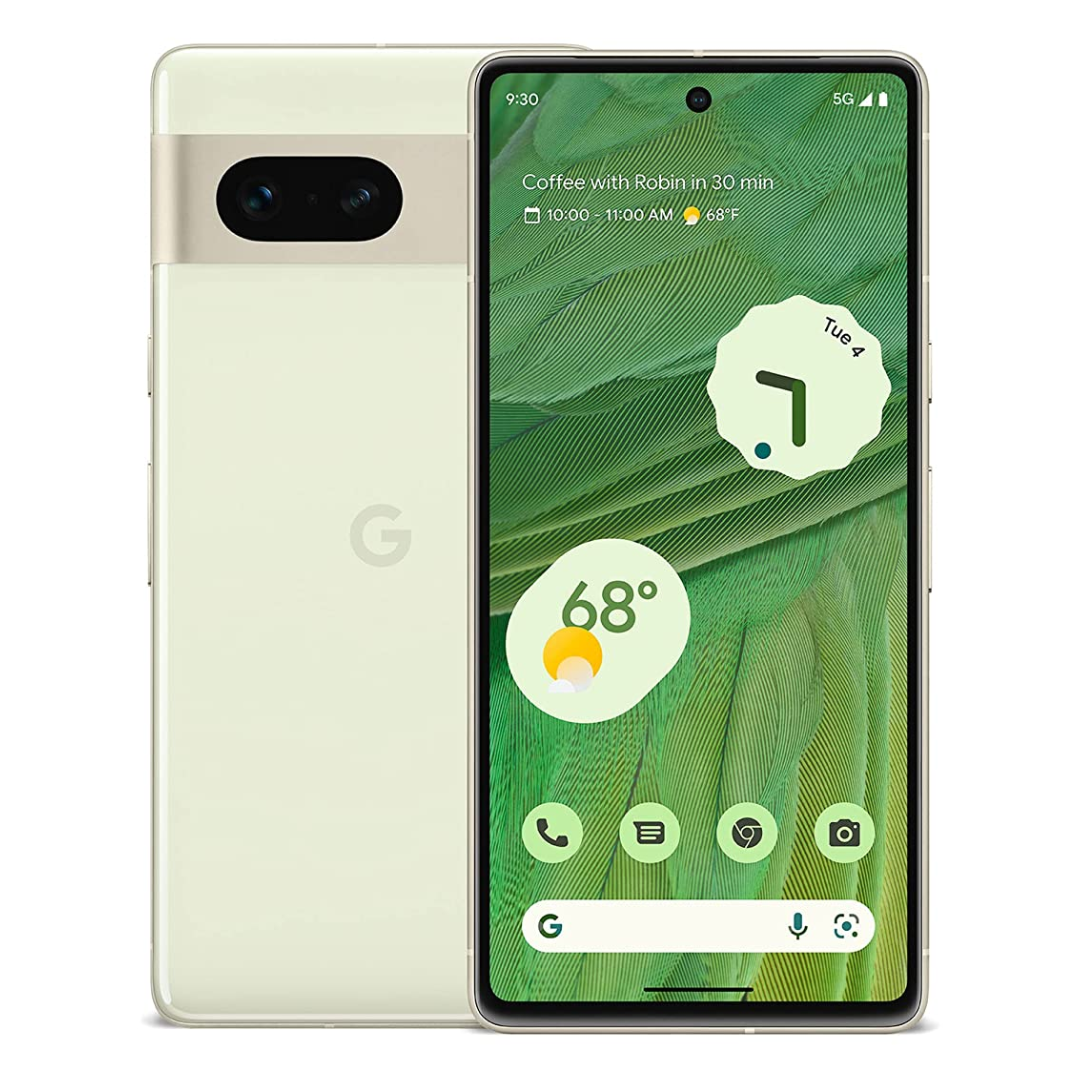
Google Pixel 7
A lot of brains with some brawn
The Pixel 7 doesn’t break the Pixel mold that Google set last year. It has a stronger and more capable Tensor G2 processor, improved AI features, stronger connectivity, and an improved fingerprint scanner. Keeping it the same price as last year solidified the Pixel 7 as the value smartphone champion, but its crown has now been stolen by the Pixel 7a and the Pixel 8.
Pros- More AI capabilities
- Improved network connectivity
- Improved fingerprint sensor
Cons- Tensor G2 is not as powerful as flagship processors
- Not a huge upgrade over the Pixel 6
- Camera bar is not for everyone
-
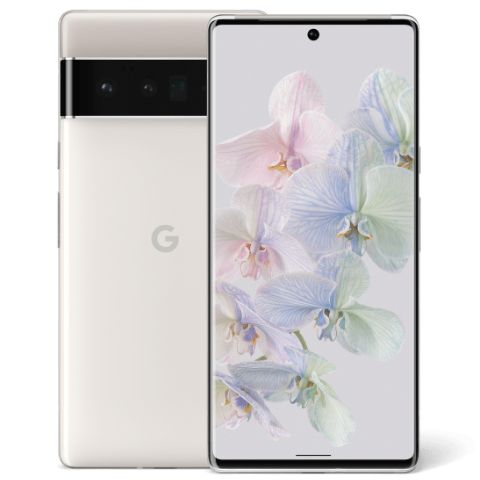
Google Pixel 6
Just as good if it’s not giving you issues
The Google Pixel 6 was a break from Google’s traditional design and was an attempt to differentiate itself from other phones on the market. Google uses a custom Tensor processor that excels at AI processing but isn’t as good for intensive tasks like gaming. Google also put in a 90Hz display, great cameras, and decent battery life, making the Pixel 6 an incredible value before it sold out forever.
Pros- Excellent camera system
- Redesigned camera bar
- Amazing value
Cons- Can suffer from connectivity issues
- Fingerprint sensor is unreliable
- Tensor G1 isn’t great for gaming
The Google Pixel 6 launched in 2021 and instantly became one of the best Android phones you could get, despite a few stumbling blocks from Google’s first-gen Tensor chipset. The Pixel 7 launched a year later, fixing many of those issues and providing a more polished experience. Both phones look, feel, and act very similarly, and at this point, both have been made obsolete by the Google Pixel 8 and Pixel 7a.
We’ve dug deep into the minute differences between these phones, but if you’re looking to buy one of them in 2024, you can get more bang for your buck with the current-gen Pixels. On top of having newer processors and upgraded cameras, they’re getting frequent deals and — in the case of the Pixel 8 — seven full years of system and security updates, meaning they’ll last much, much longer before reaching the end of their support life.
Price, availability, and specs
Both the Pixel 6 and 7 launched at $600, but these days, it’s very difficult to find a Pixel 6 still on sale new, and the Pixel 7 is starting to dwindle in supply, too. If you were looking to save money by buying a Pixel 6, you’ll almost be better off with a Pixel 7a, and despite the price bump, the Pixel 8 proves its value over the Pixel 7 pretty easily.
In rare instances when the Pixel 7 drops to $450 or less, it could be a compelling deal, but don’t expect to see that often outside shopping holidays like Prime Day.
The Pixel 7 was available in more countries internationally than the Pixel 6, launching in a total of 17 markets: the United States, Canada, the United Kingdom, Australia, Japan, India, Singapore, Taiwan, and select European countries, with Norway, Denmark, Sweden, and the Netherlands being part of the party for the first time. The Pixel 7 was the first Pixel sold in India since the Pixel 4.
-
Google Pixel 7 Google Pixel 6 SoC Google Tensor G2 Google Tensor RAM 8GB Storage 128GB, 256GB 8GB Battery 4,355mAh 128GB, 256GB Operating System Android 13 4614mAh Front camera 10.8MP, f/2.2, 92.8° FoV Android 14 Connectivity NFC 8MP f/2.0, 84° FOV Dimensions 155.6 x 73.2 x 8.7mm NFC IP Rating IP68 158.6mm x 74.8mm x 8.9mm Price From $599 IP68
Design
Google stays true to its new visor-design language with the Pixel 7. Like the Pixel 6 before it, the Pixel 7 still has its camera array set in a bar at the top of the back that stretches horizontally from one side to the other. This makes both phones easy to use when they’re flat on a table, even without a case. That can’t be said for many other modern smartphones, with designs like the Samsung Galaxy S23 Ultra simply unable to provide this experience.
The Pixel 7 is more refined than the Pixel 6, though. The visor is now made of aluminum, the same material as the frame. It makes for a smooth transition from the sides to the visor, which makes it feel much less tacked on. Looking at the front, you’ll also notice that the bezels around the screen have shrunken a little, safe for the bottom bezel, which is still roughly the same size as on the Pixel 6. It’s the one part of the new phone that isn’t so pretty.
It might not be so obvious when you look at both phones side-by-side, but the Pixel 7 is a tad smaller in all dimensions than its predecessor. This is most noticeable when you handle both devices. The Pixel 7 fits the hands ever-so-slightly better, and it’s easier to maintain a grip when you need to wield it one-handed. Make no mistake, though. The Pixel 6 and 7 are fingerprint magnets, with Google still choosing to go with a glossy glass finish on the back.
When it comes to colors, you have new options to choose from. While the Pixel 6 came in Sorta Seafoam, Kinda Coral, and Stormy Black, the Pixel 7 is available in Lemongrass, Snow, and Obsidian. This means you won’t have the option to get a fully pink/red phone from Google anymore; instead, you can now get a white version.
Display
The Pixel 7 and the Pixel 6 share almost the exact same displays. Both phones have an AMOLED display with a 1080 x 2400 resolution. They also have a refresh rate of 90Hz, are capable of displaying HDR10+ content, and are protected by Gorilla Glass Victus. The Pixel 7 uses a 6.3-inch display with a pixel density of 416 ppi and can hit a peak brightness of 1400 nits.
The Pixel 6 has a 6.4-inch display with a pixel density of 411 PPI and is capable of hitting a peak brightness of 800 nits. You may not notice the size difference between these displays, but you will notice that the Pixel 7’s display is easier to see outdoors.
Software
There isn’t much to talk about in the software department. Both the Pixel 7 and the Pixel 6 run Android 13, though naturally, the Pixel 7 is guaranteed to get updates for a year longer than the Pixel 6 at this point. That means you’re looking at three years of Android version upgrades and five years of security patches, while the Pixel 6 only has two years of Android upgrades left and four years of security patches. That makes sense, as the device is already one year old.
One of the highlighting additions is probably face unlock. Google says that while the company only relies on the camera to make it work, the Pixel 7 has measures that prevent someone from simply holding an image of you in front of the screen to get in. However, the company doesn’t seem to trust the system enough for more than the lock screen. You can still only use your fingerprint to unlock apps like your password manager or online banking.
Regarding the fingerprint scanner, Google has upgraded both the hardware and the software. While the fingerprint scanner was one of the weakest points of the Pixel 6, the Pixel 7’s scanner feels just fine. It’s faster and more accurate, with fewer false negatives that force you to input your PIN code.
Android 13 behaves mostly the same on both devices, but Google threw in a few new software features for the Pixel 7: The new phone will display a weather report on your lock screen and home screen in the morning automatically; there is a new “Silence” voice action you can use without saying “OK, Google”; there are also upgrades to the Recorder app, and Pixel Call Assist can now display menu structures for a selection of toll-free numbers without you having to wait for the band to list them all.
Later this year, the Pixel 7 will also get access to Google’s VPN service for free, and you will get to enjoy Clear Calling, a new feature that’s supposed to make it easier for you to hear phone calls in loud environments.
Performance and connectivity
Besides the new design and size difference, Google hasn’t made many changes to the Pixel series. You’re looking at a new, slightly upgraded version of the Tensor chip in the form of the Google Tensor G2, but other than that, the same 8GB of RAM and up to 256GB of storage. The Tensor G2 won’t blow the Tensor out of the water in raw performance but has been further optimized for the AI tasks that are baked into the Pixel’s software.
The new Tensor G2 chip also comes with a new modem, which promises better connectivity, giving it a leg up among the best 5G phones. The modem the Pixel 6 shipped with had a lot of connectivity issues for some, and based on early reports, the problems seem to be far less severe with the Pixel 7 than with the 6. This is just based on early data, though, so you might want to hold off for just a bit until more reports come in talking about connectivity.
Battery life and charging
The battery got slightly smaller and now offers only 4,355mAh rather than 4614mAh. The overall battery life should last about the same amount of time due to a more refined chipset and a slightly smaller display. Charging capabilities remain the same for both devices. Wired charging speeds are slightly different between the two. The Pixel 7 can be charged at 30W using a wired charger, while the Pixel 6 tops out at 21W. Both are capable of wireless charging and reverse wireless charging.
Camera
Across the Pixel 7 and the Pixel 6, the camera hardware is the same on the back. You’re looking at a 50MP wide standard camera accompanied by a 12MP ultrawide. This is a regular practice for Google. The company prefers to stick with a hardware setup for multiple generations instead of focusing on improving the surrounding software and algorithms to get even more out of it. This is just what Google does for the Pixel 7.
The Pixel 7 offers much faster night photography at the same quality. In our testing, the Pixel 6 almost always took at least twice as long to capture the same shot at night. The Pixel 7 goes beyond just faster capture times, though. It introduces a new max night mode that lets you capture even more light for a better picture in the dark. And if you prefer, you can also easily turn off night mode altogether. That’s great when shooting fast-moving subjects or objects, where timing is of the essence.
On the Pixel 7, Google has additionally enhanced its True Tone algorithms to accurately represent every skin tone true to nature. Google pioneered this technology in previous versions, but the Pixel 7 steps things up again.
1st and 2nd: Pixel 6 vs. Pixel 7 at 2x zoom — 3rd and 4th: Pixel 6 vs. Pixel 7 at 2x zoom, cropped in to show the difference in details
Google has also improved Super Res Zoom, its computationally supported digital zoom. When you zoom in by 2x on the Pixel 7, the phone will now use all pixels in the exact area of the sensor to give you a more accurate and detailed image. The Pixel 6 simply cropped in with the regular pixel binning in place for the 50MP camera, meaning it doesn’t get as many details. Despite both phones sharing the same hardware, the difference is stunning, particularly in portrait shots.
Pixel 7 shots first, Pixel 6 shots second
On the software side, you can also look forward to Photo Unblur. This feature allows Pixel 7 owners to enhance any of the photos in their library using a new algorithm that removes motion blur and other fuzzy looks from shots. It works surprisingly well on photos in good lighting that don’t exhibit extreme issues, but that could look better if people were actually in focus. While Google hasn’t confirmed it, we would expect this feature to make it to older phones at some point, too, though.
Should you upgrade?
At this point, if you’re upgrading from a Pixel 6, you’re better off going with the Pixel 8, or the Pixel 7a if you need a Pixel on a budget. The Pixel 7 and Pixel 6 were both solid phones in their day, but that day has ended.

Google Pixel 7
Editor’s choice
A lot of brains with some brawn
Google kept the best parts of the Pixel 6 and improved upon some of its weaknesses, specifically its connectivity and fingerprint sensor issues. If you don’t have any problems with the Pixel 6, you should hold onto it. For everyone else, the Pixel 7 is, without a doubt, the better of the two devices, even though it’s no longer the best Pixel on the market.
If you already have the Pixel 6, and it isn’t giving you any problems, then it is still a perfectly fine device. Its Tensor G1 chipset, overall performance, and camera are still top-notch. It’s not the device to get if purchasing new, but it’s definitely worth holding onto if you already own it, even if only to see the Pixel 8a in May.

Google Pixel 6
Keep it if you’ve got it
Just as good if it’s not giving you issues
Two years later, the Pixel 6 is still one of the better phones you can get. If you don’t experience any connectivity or fingerprint sensor issues, then you can rest assured that you aren’t missing out on much. The original Tensor chipset is almost as capable as the Tensor G2, and its camera remains one of the best. Only upgrade if you are having issues.
Source link
